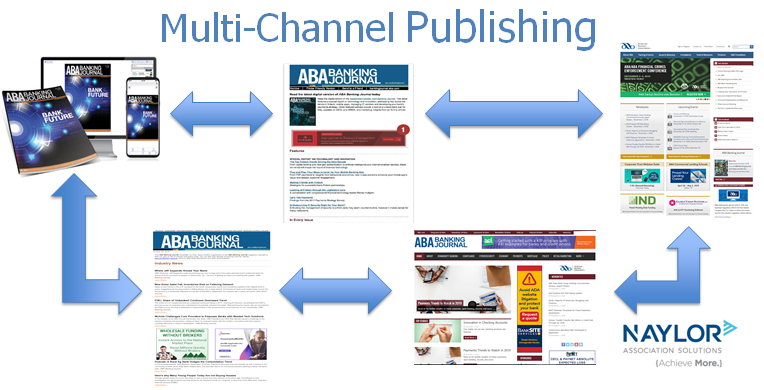Face Your Fear of Technology
Have you heard of the “Sunday scaries?” It’s a term some people use to describe the anxious feeling you get on Sunday nights when you’re facing down a full week of work, kids’ schedules, meetings, appointments, and other obligations.
Technology (and the thought of it) sometimes elicits a similar response. I’ve worked with hundreds of associations and here are some of the responses I have gotten when asking about their take on “technology” or “new ways” of reaching and engaging their members:
- Do we have to?
- We are “old school.”
- We are fine with our current program.
- Our members don’t like technology.
- We have been doing it this way for years.
- We don’t have the staff to take on such an undertaking.
- (Have you surveyed your members?) No, but we know what our members want.
I understand the hesitation with any change in the way you do business, but if there isn’t a concerted effort to evaluate your communications and marketing technology at least once per year, your members will seek the education, content and advertising opportunities they want from for-profit, subscription-based organizations. Do you want your members spending their professional development and advertising dollars with these organizations and not yours?
There are non-scary ways to embrace technology to better engage with your members and to maximize non-dues revenue for your association. Much of the tech we use or encounter in our everyday lives can be adapted for association use. Let’s look at a few:
Multi-channel publishing pulls in more readers and viewers
Have you ever live-tweeted along with a live football game, or of “Dancing with the Stars?” Ever clicked on a Facebook post from your hometown newspaper to their website for the full story? Ever read a recipe in a print magazine and then gone online to watch a video of someone making that same recipe? This is multi-channel publishing. This form of technology is more like coordinated publishing that delivers publications to your readers in many different ways at the same time. It allows content to live on multiple platforms.
The example below shows you how your publication can be delivered in print or digitally published to a website, or read from a mobile device. The content does not change, but the way it is delivered to your reader does.

It is important to make sure that your members are receiving your content through several different print and digital channels for your association to reach a wider audience. Not everyone gets their information from a single source, and members won’t regularly go out of their way to consume content on channels they don’t prefer.
It’s up to your association to use a comprehensive, multi-platform content plan to get your message to members and readers through print and digital publishing. Automated content publishing systems like content management software (CMS) platform or a social media content scheduler will help cut down on labor time from your staff. The goal of this technology is to develop fully integrated systems that help associations and organizations be more efficient.
Go mobile or go home empty-handed
Your members want mobile. Consider these stats from ComScore and VentureBeat:
- People spend more time viewing content from a mobile device than desktop.
- 65 percent of all email opened in the U.S. is opened first on a mobile device.
- Of that amount, 84 percent are opened on a smartphone.
We spend a lot of time on our mobile devices. (Some phones help you track how much time, on average, you spend on your smart phone daily. It’s sobering to discover!) But because most of us are glued to our phones throughout the day for email, social media, weather updates, financial transactions, or even phone calls, it’s so important to make sure that your association or organization has a presence on mobile platforms. Helping members seamlessly make the transition between their consumer apps and your association publications while tapping around on their phones is key to keeping them engaged with and giving your advertisers the attention they expect.
Many CMS platforms have mobile-friendly features, such as responsive image sizing or mobile-appropriate content widths, baked in. Ask your provider for help with this issue and they’ll gladly show you how to take advantage of such features.
Responsive design makes association publications breezy to read
One such feature is the ability to make your content show up legibly and clearly on any size screen without your staff having to manually anticipate and mock up all needed sizes. Responsive design reformats the layout and content of a web page or email depending on the size and configuration of a reader’s device. It has been around for more than 10 years now, and smart associations use responsive design for their member communication every chance they have.
Many digital communication platforms that serve associations are moving to responsive design. With this change, the content and layout of these platforms are much more simplistic and clean in design. No longer are you seeing website and newsletters cluttered with columns full of content.
Adopting responsive design across your member communications will improve how many members are reading your content and in turn increase the number of eyes seeing your advertisers’ message on the platform as well. This will increase your chances of advertisers renewing their ad placements because not only are they reaching the right people, but more of those people are seeing them as well.
Retargeting reels members back in
This tech is definitely not as scary as it sounds because it’s highly likely you’ve already experienced it while browsing online – and while you might feel like Big Brother is watching, you’re probably okay with that.
Retargeting is the most commonly known and relatable form of programmatic advertising. You’ve gone online to research about a purchase you’re interested in making, and now you’re seeing ads for that type of purchase everywhere.
For example, I’m researching new basketball shoes. After researching and looking at prices online at different stores and boutiques, I begin to notice ads for those shoes are popping up as I surf the web, even on non-related websites. While you may have only noticed this as a consumer, the same technology applies in the B2B world.
This graphic shows that site retargeting process:

- Visitors to your site are potential customers to suppliers in your industry and site.
- By simply placing a pixel on your website, it will then attach a cookie to your site visitors IP address, which allows user’s behavior to be tracked as they surf the web.
- Based on the data collected, personas can be built for advertisers to create highly specified ad campaigns, serving ads to those people around the web.
- This approach allows advertisers to focus their marketing dollars on the right audience (versus a large audience), increasing their ROI.
- This is powerful for associations because it is extending your reach beyond your sites, in turn giving you more non-dues revenue potential.
Based on a report conducted by Dun & Bradstreet and Adweek BrandShare earlier this year, 88 percent of B2B marketers are currently buying or selling advertising programmatically. Of those, 64 percent are planning to spend more in 2018 that last year and 63 percent are focusing on display advertising across the web.
In short, learning about this form of technology and embracing it, even if it’s just on one website your association manages, means your association can remain a central connection between buyers, suppliers, and other customers in your industry.
The courage to broach new tech means the courage to earn more non-dues revenue
This is no time to be scared of tech. Think of all the association programming that relies upon being up-to-date with technology, as well the non-dues revenue that can be earned from that tech. Associations rely upon non-dues revenue to:
- Supplement their mission.
- Finance lobbying
- Fund certification programs, scholarships and student outreach.
- Keep membership dues affordable.
- Offset costs of your communications program.
- Provide means for businesses to give back to the group that supports them.
There are traditional and non-traditional ways that allow advertisers to brand their company as a knowledgeable resource in the industry. As the association, you have the opportunity to meet a number (if not all) of the marketers needs in your industry (members and non-members) by engaging with them through multiple technologies that aren’t so scary after all.
Still need encouragement to overcome a fear of technology? Courage is not the absence of fear, wrote Nelson Mandela, but the triumph over it. Many people who feel the “Sunday scaries” make a plan about how they’ll attack the week. Try the same approach with technology. Make a plan to attack one or two new tech items at a time, Work your plan, and you too can triumph over the technology scaries.


